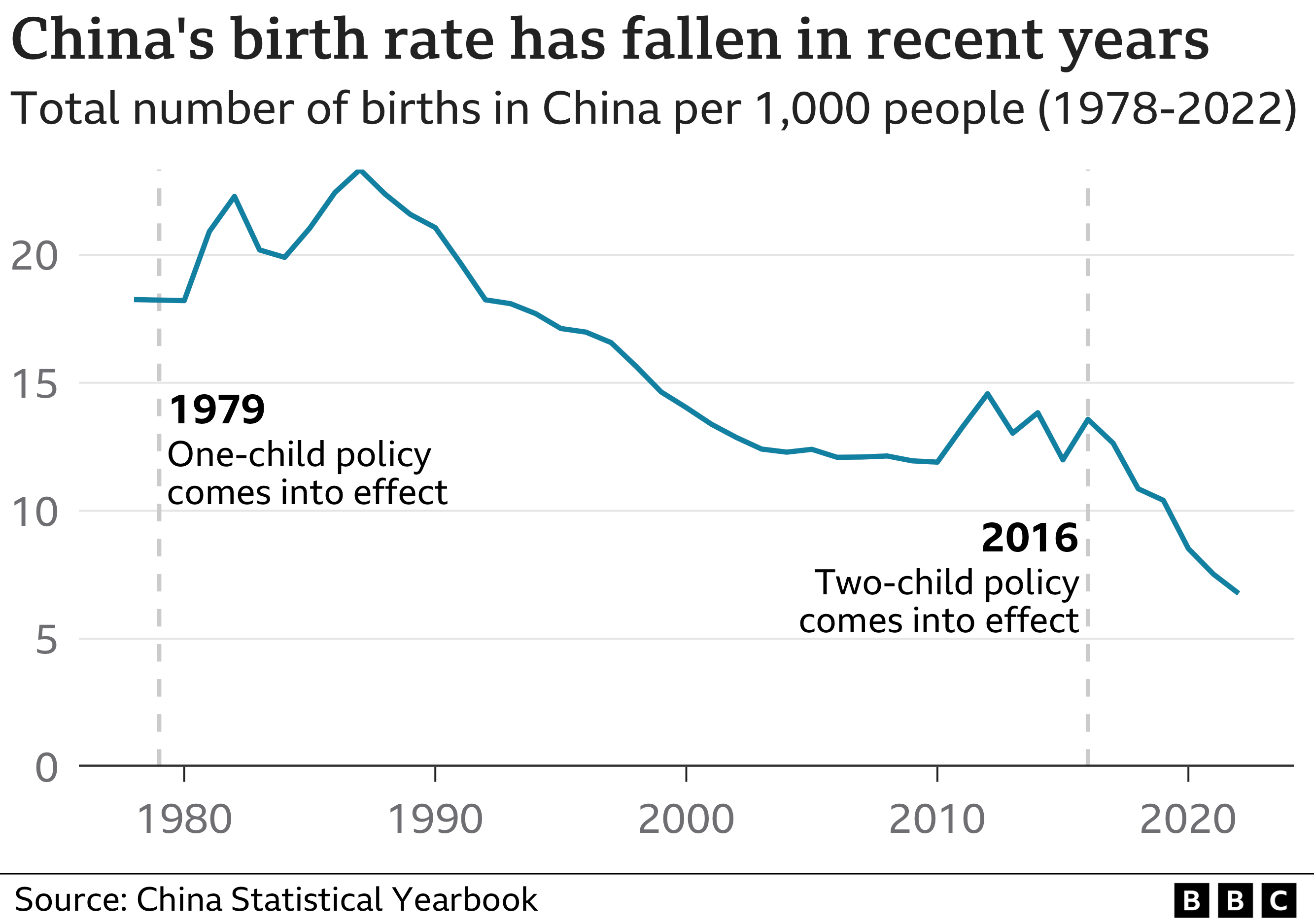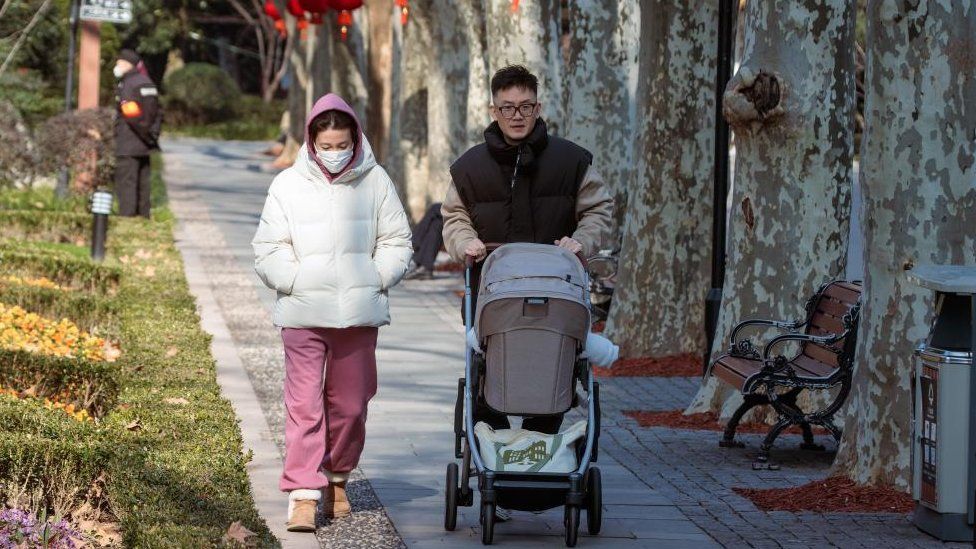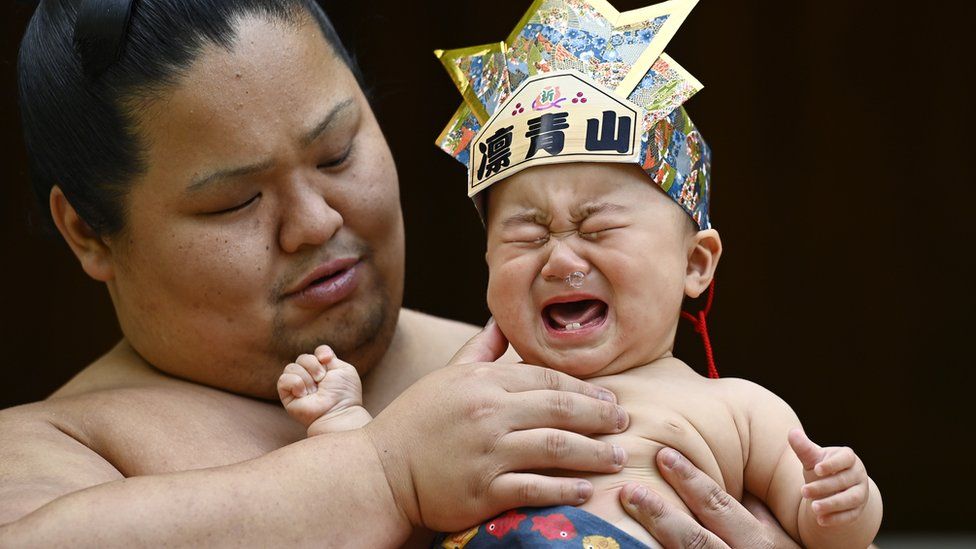
China’s population has declined for a second consecutive year, exacerbating concerns around the future growth of the world’s second-largest economy.
Once the world’s most populous nation, China was overtaken by India last year according to the UN.
National data showed its population stood at 1.409bn , down some 2.08m from the previous year. Comparatively, India’s population stands at 1.425bn.
The decrease is more than double the previous year’s loss of 850,000 people.
That had marked the country’s first downturn in 60 years – the result of decades of falling birth rates and rapid urbanisation.
Beijing says the birth rate is now down to 6.39 per 1,000 people – the lowest on record. This is on par with other advanced East Asian countries with Japan’s birth rate at 6.3 and South Korea’s at 4.9.
After decades of a controversial one-child policy in place from 1980-2015, China has spent the past years trying to slow its plunging childbirth rate with subsidies and other policies to encourage families. In 2021 it allowed couples to have up to three children.
However the changes have borne little impact with young people citing deterrents like the cost of living in cities and career priorities for women.

On Wednesday, Chinese internet users pointed to these problems.
“If you let people live more easily, with more security, of course there will be more people wanting kids,” one user wrote in a top-liked comment on Weibo.
However, one analyst said China still has “plenty of manpower” and “a lot of lead time” to manage the demographic challenge.
“They are not in a doomsday scenario right away,” Paul Cheung, Singapore’s former chief statistician had earlier told the BBC.
Economic woes were further highlighted in 2023, with the country experiencing several aftershocks after re-opening from a three-year Covid period.
Last year it battled through a widespread property crisis, falling consumer consumption and record youth joblessness.
Annual data on Wednesday confirmed the struggles – showing the economy had grown at one of its slowest rates in more than three decades – with GDP expanding at 5.2% to hit 126 trillion yuan ($17.6 trillion) in 2023.
This marked the weakest performance since 1990 – excluding the pandemic years – which saw a record 3% GDP rate in 2022.
The latest population data is likely to reinforce fears about the economy, experts say. China has long relied on its massive workforce as a key driver of its economy.
But the country is facing increased pressure on its healthcare and pension systems as its retiree population grows.
That group is expected to increase 60% to 400 million people by 2035- larger than the entire population of the United States.
China’s death rate was also at its highest in decades in 2023- 7.87 deaths per 1,000 people up from the rate of 7.37 deaths in 2022. This was the highest since 1974 during the Cultural Revolution, Reuters reported.
A wave of Covid deaths after China opened up is believed to have contributed to the population decline in 2023.
-
-
20 January 2023

-
-
-
16 March 2023

-
-
-
10 February 2023

-


